A tale in Trieste
At the end of the 19th century, the border region between Italy and Slovenia had mountains with no trees. A massive reforestation ordered by the Austro-Hungarian Empire allowed to recover forests and revitalize the region. Now, however, those pines planted a century ago are in danger.
![]()
For Roberto and Andrea
Roberto Valenti works in the Centro Didattico of Basovizza, a small town 8 km away from the city of Trieste. Native of the area, son of an Italian and a Slovenian, is a reflection of a Europe with a complex and turbulent past, where internal borders waveringly tend to vanish. Roberto works for the forestry corps and knows well the forests of the region, where rubbished signs appear among the trees, announcing the close boundary of the state at 350 meters. Roberto passionately explains the titanic task undertaken by the forestry corps of the Austro-Hungarian empire to reforest the coastal region of Istria with black pine at the beginning of the 20th century. As in so many other areas of the Mediterranean basin, human activity had depauperated the vegetation leaving the rock exposed. Overgrazing, a long history of wars, the demand for timber for the construction of ships in an area where maritime trade was essential - it is estimated that 120,000 tree trunks were needed to maintain a ship throughout its 150 years of life - and the demand for timber for industry and mining in Slovenia, Bosnia and Herzegovina had turned the region into a desert of stones.
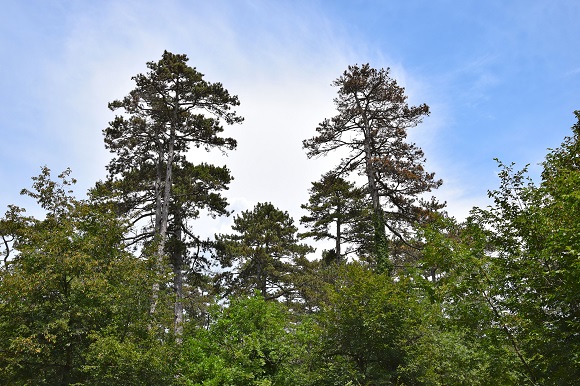
With the particularity that we are in the region of Carso or Kras, which has given name to karst formations, geological systems in which the limestone is dissolved by the action of carbonic acid dissolved in water. This dissolution of the rock occurs both on the surface, giving rise, for example, to the typical fluted rocks of the karren or lapiz, as well as in depth, producing a complex network of caves and sinkholes, connected to each other and with underground rivers. This was discovered by Jovan Cvijic for the first time in 1893, in his doctoral thesis, when he described the relationship between the surface relief and the subterranean one in the region near Trieste, after surveying the open cuts in the rock during the construction of the railway that connected this city with the heart of the Austro-Hungarian Empire. In fact, these karstic formations are quite frequent in the Mediterranean basin as a result of a geological history in which the collision of the African and European continent, together with several continental microplates, promoted the accumulation of marine sediments near the shore of the emerged lands. As we will see later, this complex geological history has a lot to do with the biodiversity of the region. In the Iberian Peninsula we find karst formations in the Garraf massif near Barcelona, in the Torcal de Antequera, in the Ciudad Encantad of Cuenca, in the Rio Lobo Canyon in Soria, or in the Larra massif in Navarra, among many other sites.
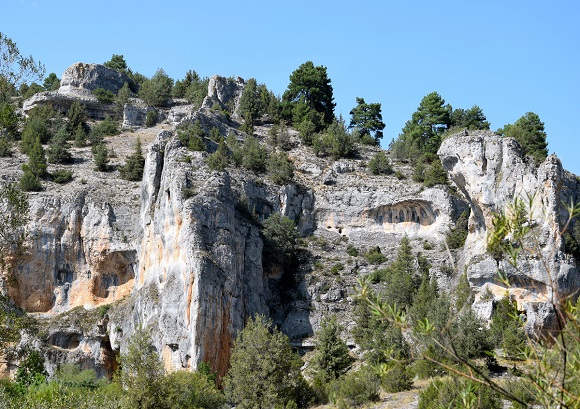
This dissolution of limestone rocks well illustrates a mechanism that, on a scale of millennia, regulates atmospheric CO2 concentrations. This CO2 dissolves in the rainwater, giving rise to carbonic acid, which once reacted with the rock is transformed into bicarbonate and is carried by the run-off to the rivers and the sea. In turn, the vegetation contributes to the acidification of these waters by generating humus, also contributing to the deep weathering of these rocks. In this way CO2 is removed from the atmosphere. It has been calculated that this process reduces the thickness of the rock by several centimeters every millennium. At first sight, it may not seem like a lot, but when we multiply by millions of years and by the entire surface of the Earth covered by rocks, we understand that on a geological scale the weathering of the rocks is one of the main mechanisms of climate control of the Earth. Its importance is even greater because the process self-regulates: the higher the concentration of CO2 in the atmosphere, the Earth's climate gets warmer as a result of the greenhouse effect caused by this gas. In turn, the weathering of the rock accelerates with the temperature, which increases the CO2 consumption, and its concentration in the atmosphere is reduced. There is therefore a negative feedback that prevents temperatures from exploding. The geological scale of this process would be difficult to apprehend if it were not for the sinuous, sharp concavities of the karst: they visualize us the carbon cycle on Earth.
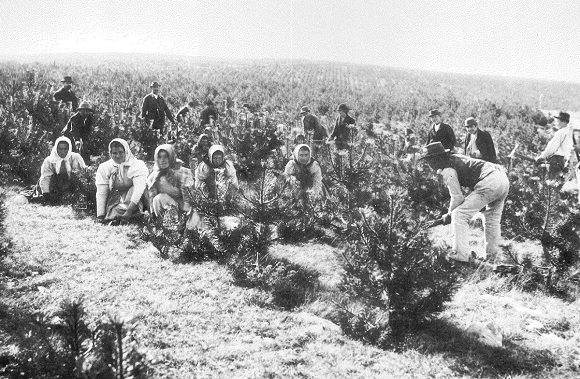
The task of reforestation in the Dinaric region had already begun in the mid-nineteenth century. The aim of the Austro-Hungarian engineers was not exclusively to restore the natural environment, but also to supply wood for the fleet, industry and the railway of the empire in a strategic region. Trieste constituted the exit of the Empire to the Mediterranean sea. That explains the magnificent buildings of the city - some of them were the headquarters of important shipping and insurance companies - and the cosmopolitanism of a society that allowed James Joyce to survive teaching English while writing Ulysses. The Austro-Hungarian engineers chose the black pine, whose distribution area extends through southern Europe with different varieties and species. They recognized in this species, particularly in the variety from nearby Dalmatia, a great resistance to a stressing environment. They mobilized hundreds of people who dug holes in the rock, transported soil to fill them and planted the pine trees they had grown in nurseries built for that purpose. It was an economic injection into an impoverished rural environment, despite its proximity to the flourishing city. The plan was that pines will generate an appropriate habitat - humus and the microclimate- for the establishment and growth of hardwood species, more typical of the place. We must understand that, with more than 1000 mm of annual precipitation, the climate in Trieste is much more humid than in other places of the Mediterranean basin.
Spanish forest engineers of Spanish, inspired by the Germanic school, also applied these principles that combined productive objectives with the preservation of soils against erosion, favoring vegetation cover and regulating the hydrological cycle. Today we would talk about the multifunctionality of forests to justifying interventions with these same objectives. For example, at the beginning of the 20th century, the engineers of the Servicio Hidrológico-Forestal promoted in the Bosc de Poblet, in the mountains of Prades, Tarragona, a huge reforestation whose result we can see today in the protected area of the Paratge Natural de Poblet. These practices were intensively resumed in Spain during the Franco regime, at a political moment in which self-supply of resources was promoted on a national scale. With a noticeably drier climate, the success of these reforestations as habitat generators was considerably lower in the Iberian Peninsula than in Trieste. The result was homogenous masses of trees, often rickety and vulnerable to pests and fires. This vulnerability was accentuated in localities with extreme climatic or edaphic conditions, even for species as hardy as Aleppo pine or black pine. Currently we see the deterioration of these masses during the years of drought, devoured by pests such as the processionary or bark beetles, or burned by wildfires. Beginning in the 1980s, active policies of reforestation declined drastically and the paradigm of promoting forests with a greater diversity of species and a greater role of Quercus species was imposed, at least where the priority is soil conservation by the vegetation cover.
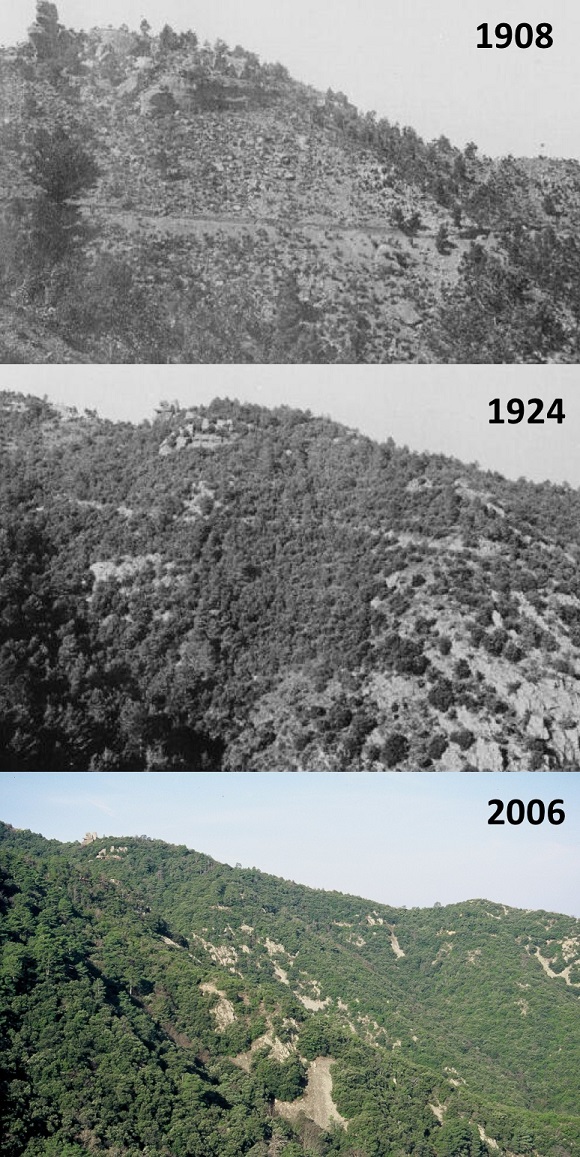
One hundred years later, we must recognize the success of the Austro-Hungarian engineers. Under a scattered canopy of pines up to 20 meters high, a dense understory of oak, ash, and maples has been developed. The regeneration of the pines is scarce, but the canopy of hardwood regenerates well. It is difficult to imagine there a barren landscape dominated by rocks, unless we sight the photographs from the early twentieth century. This story illustrates how natural processes can be used for conservation purposes. A classical ecological principle well explains vegetation succession as a sequence of species replacement in which a species transforms the environment and makes it more favorable to other species. Colleagues from the Department of Ecology of the University of Granada have applied the same principle to a more modest scale, proposing Mediterranean shrubs, even small ones, as nurses facilitating the establishment of trees in environments highly exposed to sun radiation.
But nature never ceases to amaze us. Currently, the Trieste pines, despite their dominance in the tree canopy, present important signs of die-back and many have already died. It does not seem that the trees are too old: a century is not too much for a long-living tree. The mortality of the trees was evident after 2012, when there was an extraordinarily dry summer, something that had already happened in 2003. Ecophysiologists working in the area, such as Andrea Nardini, have observed that the most affected trees were those that had grown better throughout the 20th century, forming broad conductive vessels that made them vulnerable during particularly dry periods. On the contrary, trees that resist better are more efficient in the use of water, closing their stomata and obtaining water from deeper water table levels. It is not a strange pattern. In many forests of the world, die-off and mortality phenomena associated with extreme drought periods are being observed. One of the conclusions that scientists are achieving is that trees that die have already begun their decline years before, commonly associated with specific periods of drought. Often, these trees have become acclimated to living in good conditions, which has increased their vulnerability to a climatic environment that in many regions is becoming more arid as a result of rising temperatures.
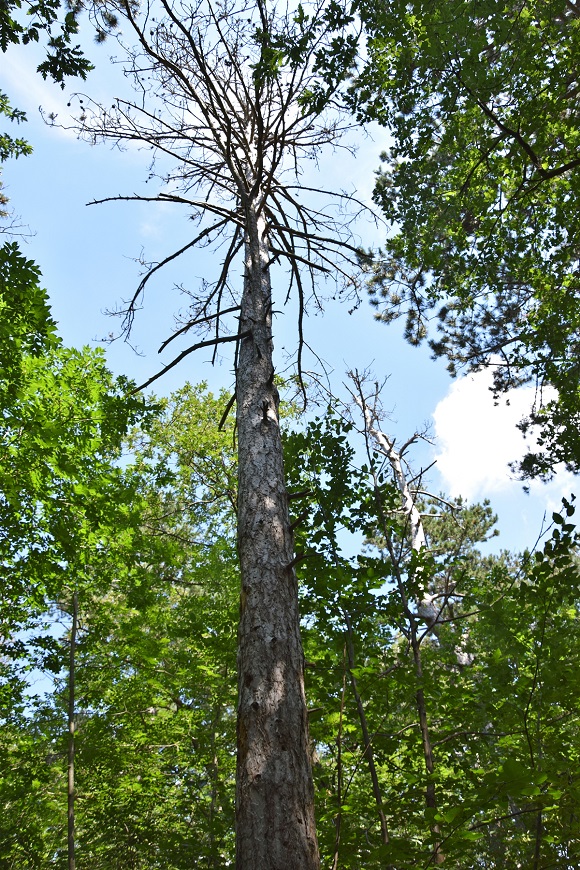
Despite the success of the reforestation, Roberto Valenti is worried. New problems have appeared: exotic tree species, such as Ailanthus altissima and Robinia pseudoacacia, threaten to spread into the forest, although for the moment they dominate mainly in the forest edge. Another problem are wildfires, since these forests are in the middle of a highly humanized landscape and the climatic conditions are becoming more prone to fires. Roberto does not like summer, with its long watches, equipped with firefighting equipment, enduring the summer heat. But surely what worries Roberto the most is that the very extension of the forest, so laboriously achieved, threatens one of the main natural values of the area. The Balkan and Aegean regions are characterized by their extraordinary diversity of plant species. There live more than 6500 species, of which 1500 are endemic. This fact has been recognized by European conservation regulations. Therefore, it has become a priority for managers like Roberto, who see that the hard-won forest area should be reduced, since most of these endemic species live in open habitats, like scrublands and pastures. In fact, the floristic diversity in the Balkanic region is one of the highest of the whole Mediterranean basin, a hot-spot of biodiversity. Many of the endemic species of the Mediterranean basin are annual or short-lived species, which facilitates speciation since, for a given number of years, they produce a great number of generations. The biodiversity of the Mediterranean basin has been attributed to a complex biogeographical history in a landscape that is already very heterogeneous, with isolated small continental plates that ended up coming together, causing uplifts of mountains and a great diversity of lithological substrates and climates, as we saw at the beginning. In this environment with a complex orography and accentuated climatic gradients, a rich biota has been generated with the confluence of species with different origins: subtropical, central European, sub-Saharan, Asian, in addition to that originated in the Mediterranean itself. More recently, human activity has been added to this biogeographic history, which also generates an important heterogeneity of habitats.
The history of the forests of Trieste tells us many things. It tells us about the functioning of natural processes and how human societies interfere in them, attending to different objectives. It is true that natural systems are complex and human activity usually produces side effects. But to a certain extent the objectives are usually achieved. It also happens that the needs of societies change over time. When the Austro-Hungarian engineers designed their plan, biodiversity was simply not on the agenda. The objectives of the management of the natural environment, particularly when long-term processes intervene, change because the lapse between action and result takes time, during which human society has modified its interests. One of the advantages of adaptive management is that it incorporates in its essence the re-analysis of the objectives, together with the evaluation of the actions carried out. But this feeling that even in the best of cases we never reach the ideal situation is largely due to the increase of our knowledge. It is often said that science obeys fashions, such as when it deals with biodiversity or climate change. In fact, what scientists do is to study in an accelerated way new fields that arise when incorporating more knowledge, particularly when this research can have an impact on human societies. We see then that the change is in the essence of the natural and human systems; therefore, we must incorporate it without complexes in the management of the environment, in accordance with the advances of knowledge.







